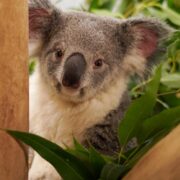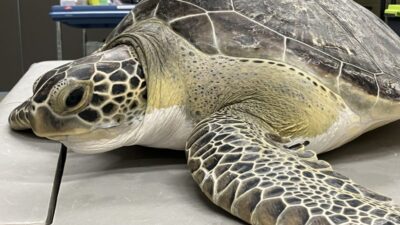San Diego Zoo Wildlife Alliance has been recognized by GUINNESS WORLD RECORDSTM for having the Oldest Living Mouse in Human Care. The oldest living mouse, named “Pat” after Sir Patrick Stewart, is a Pacific pocket mouse born on July 14, 2013, at the San Diego Zoo Safari Park. The Pacific pocket mouse is North America’s smallest mouse species, weighing about the same as three pennies.
Significant recognition for the species and the Zoo
Debra Shier, Ph.D., Brown Endowed Associate Director of Recovery Ecology at San Diego Zoo Wildlife Alliance, established and continues to oversee the Pacific pocket mouse conservation breeding program. She received a plaque commemorating Pat’s significant age at the ceremony where the GUINNESS WORLD RECORDS title was announced. Shier mentioned that the recognition was a symbol of appreciation for species that people don’t know much about but are crucial for ecosystem function. She also expressed gratitude for the team’s dedication and incredible care, which has helped San Diego Zoo Wildlife Alliance provide for each species, from the largest to the very smallest.
San Diego Zoo Wildlife Alliance’s Pacific Pocket Mouse Conservation Breeding and Reintroduction Program
San Diego Zoo Wildlife Alliance’s Pacific pocket mouse breeding program is critical for the conservation of the species. Due to human encroachment and habitat degradation, Pacific pocket mice numbers dropped sharply after 1932, leading to their near extinction. The conservation breeding program began in 2012 to save the species from extinction. With the support from Orange County Parks, the U.S. Fish and Wildlife Service, and the California Department of Fish and Wildlife, a new population of Pacific pocket mice was established in Orange County’s Laguna Coast Wilderness Park, where they began to breed without human assistance in 2017.
The breeding program focuses on studying behavior, ecology, genetics, microbiome, and physiology to best support genetically diverse, healthy, and behaviorally competent mice that are well prepared for reintroduction into native habitats. The recent breeding season of Pacific pocket mice was historic, as San Diego Zoo Wildlife Alliance recorded the earliest breeding event and pup birth in the program’s history, producing a record 31 litters, for a total of 117 pups during the spring and summer months. Many of these mice will be reintroduced into native habitats this spring.
Importance of the Pacific Pocket Mouse
Pacific pocket mice are endemic to coastal scrublands, dunes, and riverbanks within about 2 miles of the ocean. Their numbers were once widespread, ranging from Los Angeles to the Tijuana River Valley. However, their numbers drastically declined, and they were thought to be extinct for 20 years until a tiny population was rediscovered in 1993 at Orange County’s Dana Point headlands. San Diego Zoo Wildlife Alliance’s Pacific pocket mouse breeding program plays a vital role in bolstering the species and maintaining high genetic diversity, providing significant insights into the management of genetic diversity of populations in their native habitats.









